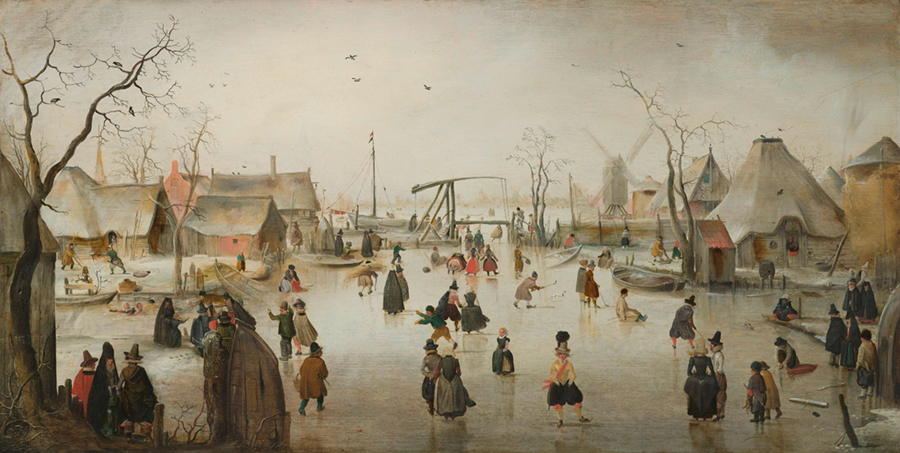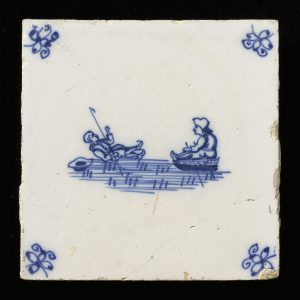
Many Americans think that winters in the Netherlands are very cold, and therefore the Dutch do a lot of skating. Maybe famous 17th century paintings like the one above, created during a little “Ice Age” in Europe, are partly to blame. Another reason might be the American book Hans Brinker, or the Silver Skates (1865), which caused a fascination with the Netherlands in the United States but is not well known among the Dutch at all. A third explanation surely is that Dutch speed skaters have won a lot of Olympic medals, which led sports journalist Katie Couric to the mistaken belief during the 2018 Winter Games that Dutch people skate on the canals as a means of transportation. Sadly, we do not have many cold winters anymore that would allow for long-distance skating, although the Dutch never lose hope for another Eleven Cities Tour.
Dutch hats and wooden shoes on ice — winter scenes from 1917
Because my instructions on how to make a Dutch hat and wooden shoes out of paper are the most popular on my site –particularly in the week before Halloween– I thought I’d share some 1917 footage that I recently found online. Filmed in the early days of still movies, outdoor sounds were added to the footage, which gives the impression that it was filmed much later. The scenes were partly filmed in Volendam (at 0:49) where Dutch hats and wooden shoes were still in full use, which is still the case with some older people. Another kind of traditional dress can be seen in Hindeloopen (at 2:55).
The “Eleven Cities Tour”
The above film includes some footage of the 1917 “Eleven Cities Tour” that winter, the first time this famous skating event was ever filmed. The almost 200 km (120 mile) race on ice, which was held in 1909 for the first time officially, is held in the province of Friesland in winters when the ice is thick enough (the last time it happened was in 1997). Starting and finishing in Friesland’s capital Leeuwarden, the skaters pass ten more cities, connected by canals. In addition to professional long-distance racers, the event is open to anybody else who want to skate the trajectory at their own tempo. It is quite possible that Katie Couric had this in mind when she made her infamous comment during the opening of the 2018 Winter Olympics.
- January 27, 2017: The first Elfstedentocht on film including a memoir from the winner, Coen de Koning (read with google translate)
- In the Netherlands, an iconic skating race — and a way of life — faces extinction from climate change
The Dutch “prikslee”
Interestingly, three centuries after Hendrick Avercamp painted the above winter scene, the film footage shows the same kind of sleds that are seen in the painting, where poles are used to move sleds forward on the ice. The word for this type of sled is prikslee (hear pronunciation), which does not translate well in English at all. The prikslee is also seen on the Delft Blue tile below, displayed at the new Dutch Tile Museum in Otterloo, the Netherlands.

In a future blog post about Dutch Heritage, I will share an activity for children showing how to make their own Delft Blue tiles out of paper or real tiles from a hardware store. Stay tuned!


where can I find the Delft tile activity? This info has been so useful in my Dutch culture lesson planning! Thank you!
Hello, thank you for reaching out! I am so glad you are using this blog post to teach about Dutch culture. I promise to finish the blog post about Dutch tiles soon.
I found your delightful post today while doing research for what the Pilgrims’ lives might have been like in the years they lived in exile in the Netherlands (1608 – 1620). A lovely website and very helpful to me. Thank you.